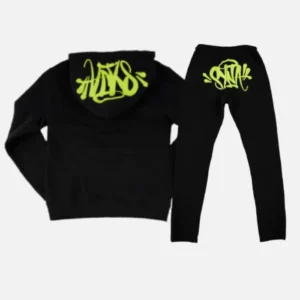In today’s fast-evolving digital landscape, the concept of immersive web experiences is gaining traction, revolutionizing how businesses connect with their audiences online. With the rapid advancements in technology, the traditional way of browsing websites is transforming into a fully interactive, engaging experience. As we move towards a more interconnected and virtual world, immersive web experiences are at the forefront, making a significant impact on the future of digital engagement.
What Are Immersive Web Experiences?
Immersive web experiences refer to online environments where users can interact with digital content in a highly engaging, real-time manner. These experiences leverage cutting-edge technologies such as virtual reality (VR), augmented reality (AR), and mixed reality (MR) to create environments that are not only visually captivating but also interactive, often blurring the lines between the physical and digital worlds.
Unlike traditional websites that present static information, immersive web experiences allow users to explore, engage, and even shape the content they interact with. This makes the experience more personalized, intuitive, and deeply engaging, fostering a sense of presence and connection that was previously unimaginable in the digital space.
How Cutting-Edge Technologies Drive Immersive Web Experiences
Several groundbreaking technologies are propelling the growth of immersive web experiences, making them more accessible and scalable for businesses and consumers alike.
1. Virtual Reality (VR)
Virtual reality takes users into fully virtual environments, creating a simulated reality that they can interact with. Through VR headsets, users are transported into immersive, 360-degree spaces where they can engage with digital elements in a more natural and intuitive way. For businesses, VR is revolutionizing sectors like e-commerce, real estate, education, and entertainment by offering fully immersive product demos, virtual store tours, and interactive educational content.
2. Augmented Reality (AR)
AR enhances the real-world environment by overlaying digital elements onto the physical world. Through smartphones or AR glasses, users can see virtual objects integrated into their surroundings, creating unique interactive experiences. In e-commerce, AR allows consumers to virtually “try before they buy” by visualizing products in their own environment. In marketing, AR campaigns are offering innovative ways to engage users, making them feel more connected to brands.
3. Mixed Reality (MR)
Mixed reality combines the best of VR and AR, blending virtual and physical worlds to create an experience where both interact in real-time. With MR, users can interact with both digital and physical objects, offering more complex and dynamic engagements. This technology is transforming industries like manufacturing, healthcare, and gaming, where it provides immersive training simulations, interactive diagnostics, and engaging entertainment experiences.
4. WebXR and 3D Web Technologies
WebXR is an emerging standard that allows developers to create VR and AR experiences directly in web browsers without requiring additional plugins. This technology makes immersive experiences more accessible and easier to deploy across a variety of devices, including desktops, smartphones, and VR headsets. 3D web technologies, such as WebGL and Three.js, are enabling highly interactive, 3D-rendered environments, opening the door for rich, interactive web content.
The Impact of Immersive Web Experiences on Digital Engagement
The potential for immersive web experiences to transform digital engagement is vast. Below are some key ways in which this technology is shaping the future of online interaction:
1. Increased User Engagement
With immersive web experiences, businesses can offer more engaging content that captures users’ attention for longer periods. By allowing users to interact with digital elements in an immersive way, companies can enhance their storytelling, making it more compelling and memorable. This deep engagement leads to higher conversion rates, more interaction with content, and ultimately, stronger brand loyalty.
2. Personalized Experiences
The ability to create dynamic and interactive experiences enables businesses to tailor content to individual users. For example, an e-commerce site can use AR to show products in a customer’s home, or a fitness app can use VR to offer personalized workout environments. Personalized immersive web experiences make customers feel more connected to the brand, improving customer satisfaction and increasing sales.
3. Improved Customer Support and Training
Immersive technologies are enhancing customer support and training through virtual and augmented simulations. Brands can offer virtual help desks or interactive tutorials, where users can “walk through” complex processes or product features. This level of interactivity improves the overall customer experience and reduces friction in navigating products or services.
4. Enhanced Brand Storytelling
Storytelling is becoming more immersive with the integration of VR, AR, and MR technologies. Brands are able to craft experiences that place the user at the center of the story, creating deeper emotional connections. Whether it’s walking through a historical site, experiencing a product’s journey, or exploring a fictional world, immersive storytelling helps brands communicate their message in a more compelling way.
The Future of Immersive Web Experiences
As technology continues to evolve, so too will immersive web experiences. The future promises even more seamless and intuitive ways for users to interact with the digital world. With advancements in AI, machine learning, and 5G technology, we can expect even more sophisticated, real-time immersive experiences that will revolutionize how we shop, learn, work, and entertain ourselves online.
In the near future, we may see hyper-realistic virtual environments, real-time interactive shopping experiences, and the widespread adoption of XR (Extended Reality) across all aspects of life. As businesses and consumers embrace these cutting-edge tools, the digital divide will narrow, and the internet will become an even more immersive, accessible, and engaging space.
Conclusion
The rise of immersive web experiences marks a new chapter in digital engagement, where technology is transforming how we connect with content, brands, and each other. By incorporating VR, AR, and MR technologies, businesses are not just keeping pace with technological trends but are also setting the stage for future growth and customer engagement. As these technologies continue to evolve, the future of online interaction will be defined by increasingly immersive, personalized, and interactive experiences that will shape the way we engage with the digital world.
Embracing immersive web experiences is not just about adopting new technology—it’s about staying ahead of the curve and delivering more meaningful, lasting connections with your audience.




